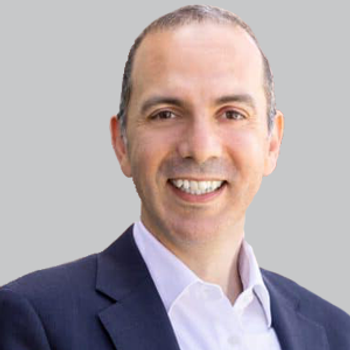
European Commission Approves Omaveloxolone as First Therapy for Friedreich Ataxia
Omaveloxolone is an oral, once-daily medication indicated for the treatment of Friedreich’s ataxia in adults and adolescents aged 16 years and older in both the United States and the European Union.
Following a positive recommendation by the Committee for Medicinal Products for Human Use, the European Commission (EC) has approved Biogen’s omaveloxolone (Skyclarys) as the first therapy specific to treat patients with Friedreich ataxia (FA). The therapy is indicated for adults and adolescents aged 16 years and older with the disease.1
"Biogen is proud to add SKYCLARYS to our portfolio of medicines and address a significant unmet need by bringing the first treatment to people living with Friedreich’s ataxia in Europe," Priya Singhal, MD, MPH, head of development at Biogen, said in a statement.1 "Our team is committed to engaging with the medical community and local authorities as we work to urgently secure access for patients. We sincerely thank the Friedreich’s ataxia community for their contributions that enabled the development of SKYCLARYS and made today’s approval possible."
Omaveloxolone, an oral medication, had its efficacy and safety demonstrated in the phase 3 MOXIe part 2 trial (NCT02255435), a 48-week, placebo-controlled study. MOXIe included 2 placebo-controlled parts and an open-label extension (OLE). Part 1 was a placebo-controlled, dose-ranging study that enrolled 69 individuals, whereas part 2 was a multicenter, randomized, placebo-controlled clinical trial that enrolled 103 patients at 11 study sites in the US, Europe, and Australia.
In the prespecified primary analysis population for MOXIe part 2, treatment with omaveloxolone significantly improved neurologic function, as measured by modified Friedreich’s Ataxia Rating Scale (mFARS) scores, by –2.40 (±0.96) points relative to placebo at week 48 (P = .014; n = 82). Within the mFARS assessment, omaveloxolone improved each component (bulbar, upper limb coordination, lower limb coordination, and upright stability) relative to placebo, although the greatest effects were on the upright stability.2
READ MORE:
To evaluate the persistence of omaveloxelone’s treatment effect, investigators performed a delayed-start analysis comparing the difference in mFARS scores at the end of the 48-week placebo-controlled period with the difference after 72 weeks in the OLE (up to 144 weeks). A noninferiority test performed using a single mixed model repeated measures model showed that the difference in mFARS between omaveloxolone and placebo observed at the end of placebo-controlled MOXIe part 2 (–2.17 [±1.09] points) was preserved after 72 weeks in the extension (–2.91 [±1.44] points). In addition, patients previously randomized to omaveloxolone in MOXIe part 2 continued to show no worsening in mFARS relative to their extension baseline through 144 weeks.3
"The European Commission approval of SKYCLARYS is a significant milestone toward expanding global access, bringing the first approved treatment to the Friedreich’s ataxia community in the EU,” Jennifer Farmer, chief executive officer of the Friedreich’s Ataxia Research Alliance, said in a statement. "FARA is grateful to all the researchers, clinical sites, individuals with Friedreich’s ataxia and their families, patient organizations, Biogen and the European Medicines Agency for the research, drug development and advocacy efforts that led to this approval. We look forward to continuing our collaboration with the Friedreich’s ataxia community with the goal of expanding access where it is needed."
In 2023, investigators published
In the pooled primary population consisting of 136 patients, matched patients from FACOMS progressed 6.6 points on mFARS compared with omaveloxolone-treated patients in MOXIe extension who progressed 3.0 points (difference, −3.6 points; nominal P = .0001). Overall, omaveloxolone reduced progression in mFARS by 55% compared with the matched group. In the primary omaveloxolone-treated population, where patients previously received 48 weeks of omaveloxolone in Part 2 of the study, progression in mFARS was slowed by 61% in patients from MOXIe extension compared with patients from FACOMS. Notably, patients from the MOXIe extension experienced an improvement from baseline in mFARS at the first year, with a treatment difference of −2.8-mFARS points (nominal P = .0035).
REFERENCES
1. Biogen received European Commission approval for Skyclarys (omaveloxolone), the first therapy to treat Friedreich’a ataxia. February 12, 2024. Accessed February 13, 2024. https://investors.biogen.com/news-releases/news-release-details/biogen-received-european-commission-approval-skyclarysr
2. Lynch DR, Chin MP, Delatycki MB, et al. Safety and efficacy of omaveloxolone in Friedreich ataxia (MOXIe study). Ann Neurol. 2021;89(2):212-225. doi:10.1002/ana.25934.
3. Lynch DR, Chin MP, Boesch S, et al. Efficacy of omaveloxolone in Friedreich ataxia: delayed-start analysis of the MOXIe extension. Mov Disord. 2023;38(2):313-320. doi:10.1002/mds.29286
4. Lynch DR, Goldsberry A, Rummey C, et al. Propensity matched comparison of omaveloxolone treatment to Friedreich ataxia natural history data. Ann Clin Transl Neurol. 2023;10.1002/acn3.51897. doi:10.1002/acn3.51897
Newsletter
Keep your finger on the pulse of neurology—subscribe to NeurologyLive for expert interviews, new data, and breakthrough treatment updates.



































